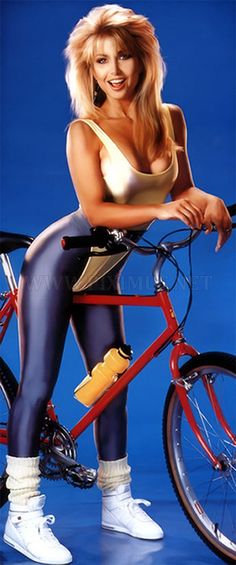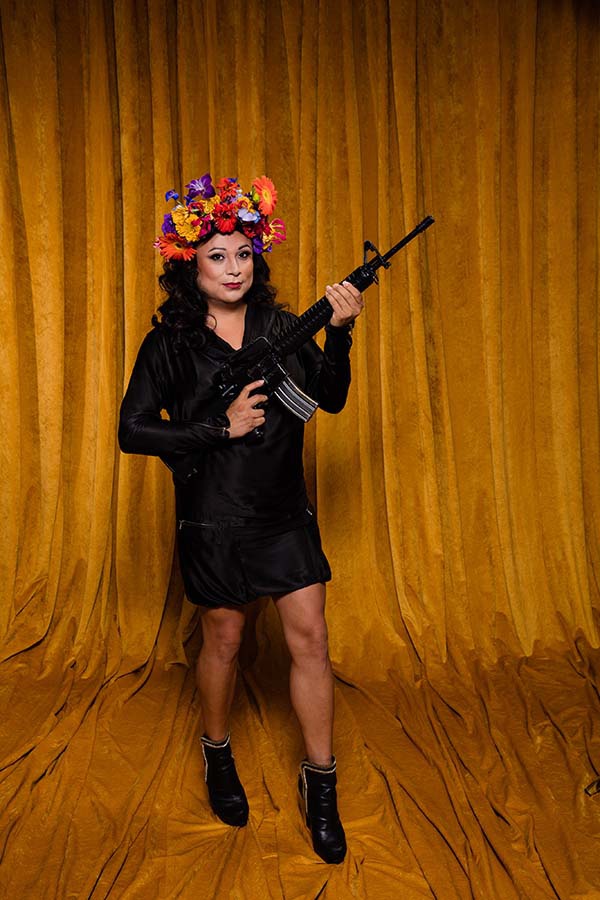Dina’s Diner 4/11/16
YOUR FAB-U-LOUS FACE
The website Buzzfeed.com had a pictorial feature headlined “17 Stunning Guys Who Seriously Slayed The Makeup Game.” The feature appeared on the site April 2, 2016 with headshot photos of fellas in full, no-holds-barred cosmetic splendor. The photos were culled from Instagram users so there are probably many more examples posted to that site.
The pictorial didn’t include any biographical or background information about the men in the photos. Most of them did not appear to be drag queens or transgendered. For the most part there were no wigs or jewelry on the models. No overt attempt to be feminine and despite the cosmetics the results were still masculine. Some of the guys had slight beard stubble in the way some young hipsters cultivate a permanent three-day unshaven look. Others were smooth-faced. Very smooth-faced. One female commenter to the feature wrote, “How is their skin so flawless? Like I know, makeup, but sweet baby Jesus, it’s so smooth!” Another concurred by saying, “I know, right? No sign of beard line in the clean shaven ones. How do they do it?” One skeptic posted her suspicions. “I’m guessing a lot of it is filters/face-tuning, not the actual makeup. Some of them don’t even look like their skin is skin, which I see lots of women doing on Instagram too.”
Well, as you can see by the example here, the effect is pretty stunning — no matter how it is achieved.
The feature left unanswered the question that puzzled me when I first saw this and even now that I have had time to mull it over: Is this a new “thing” for some guys, a kind of new approach to gender fluidity? Or is it just a hobbyist’s exercise in cosmetic artistry to be kept at home and washed off after the photos are snapped?
And finally, is it sexy? What do you think?
WHERE DID YOU GET THAT, UH, CATSUIT?
The New York Times Thursday Styles section had an article titled “Raiding the Sex Shop, Eyes Wide Open” in the March 24, 2016 edition. The Times reporter, Ruth LaFerla, writes about her foray into fetish-y fashion after watching a runway show of famous designers that included some items more often found in sex shops than Bergdorf Goodman.
Ms.LaFerla visited the Purple Passion boutique in Manhattan to buy a latex catsuit similar to one she saw in the St. Laurent show. She says that when people saw her in it (after ginning up the courage to actually wear it in public) they asked if it was an Alexander Wang or a Louis Vuitton. Elements of kinky fashion have been finding their way into mainstream haute couture lines off and on for twenty plus years now.
The most popular items for kink crossovers are corsets, latex items, platform shoes, thigh boots and harnesses. I wrote about designer harnesses in this space a couple of years ago. According to the article, kink-inspired pieces turned up in 2016 shows by Balmain, Marc Jacobs, Prada, Vetements and the above named Wang. Fashion house Diesel introduced their underwear campaign with videos on the YouPorn and PornHub websites.
Some of the designers use elements of kink paired with more mainstream clothing items to create a unique look in their shows. Mall stores like Hot Topic and Forever21 sell “watered down” versions of kink-inspired fashions in bright pastel colors to make them more palatable for the mass market.
Coincidentally, I came across an Australian video clip showing the reactions of young women after they tried on latex for the first time. The consensus was that the second-skin-like latex was “empowering.” I think the attraction of other kinky elements in women’s fashion is similar for those bold enough to wear it.
Some celebrities already rock latex dresses in their public appearances. For those narcissists who can no longer get a rise from the plunging neckline, waist high leg slit, side-boob exposure, peekaboo sheer tops and other forms of immodesty, perhaps latex, PVC, corsets, collars and harnesses may be their next step to retain red carpet attention.
Where do we go after all that begins to pale? Maybe back to turtlenecks.
THE STRETCHIEST DECADE
The newly released movie Everybody Wants Some seemed like it might unleash a wave of nostalgia for the 1980s, the decade in which the story is set. I don’t think that has happened although HLN’s Morning Express show was soliciting photos of viewers’ “big hair” and other ’80s fashion touches as a tie-in with the movie.
The 1980s are most associated with the aforementioned big hair and shoulder pads that made women’s dresses look like military uniforms from the future. For me, though, the 1980s was the Spandex decade. The stretch material may have been around before 1980 but it became a fixture in so much of pop culture in those years. There was the workout video craze (VHS video having boomed at the same time) that famously put Jane Fonda and countless other celebrities into brightly colored, skin tight stretch-wear. The so-called “Hair Bands” of the 1980s also wore a lot of Spandex pants and unitards which lent their macho music a gender ambiguous visual presentation. Other stretch-y highlights from my memory banks are Raquel Welch guest-starring in a Mork and Mindy episode as a Spandex-clad alien goddess and a local big-haired blonde hairdresser who favored black spandex pants to contain her lush bubble butt.
The greatest development in my opinion was the widespread availability of Spandex clubbing dresses. For a crossdresser trying to figure out whether I was a 16 or not and trying to figure out how the hell I was going to zip and unzip a rear-facing zipper, the one-size-fits-all, pull-on Spandex dress suddenly made everything simple. It also kept the wearer weight conscious since the material not only showed but seemed to accent any weird figure bulges. Inexpensive store brands of pantyhose became more durable and glossier with higher concentration of spandex which also made crossdressing easier and less fraught with worry over “runners.”
On a historical note, Spandex was invented by DuPont in 1959. The DuPont brand name was “Lycra” and, as one source noted, all Lycra is Spandex but not all Spandex is Lycra — if it wasn’t made by duPont. An article on Slate.com from December 2005 said, “Because Spandex boasts soft and rubbery segments, its fiber can stretch to as much as 600 percent of its original size and then snap back into shape.” Now that is a miracle fabric.
Fortunately, Spandex has become stitched into our culture on a permanent basis it seems. Where would hip hop videos be without Spandex-clad booties? The ubiquitous black leggings of the 2000s are more utilitarian descendants of disco era glossy Spandex slacks. If you like women’s sports, you gotta love collegiate volleyball with the Spandex short-shorts almost all teams have adopted. Where would cosplayers be without Spandex-ed superhero and anime recreations? If you have any interest in fetish (oh, really?) there is the genre of zentai where the Spandex suits cover the wearer head to toe or the bondage sub-genre of “encasement” in which the subject is covered and trussed up in full-body, sheer Lycra-Spandex hosiery.
I guess you can say that the 1980s — at least the spandex portion of the ’80s — stretches all the way back to 1959 and snaps forward into the next millennia where it holds tight to its place on our bodies and our hearts.
TRANSFEMINISM ON DISPLAY
The New York Times Weekend Arts section had a brief review of a new exhibit at the Andrew Kreps Manhattan gallery in the March 18, 2016 edition. The exhibit, Whose Feminism Is It Anyway?, by artist Andrea Bowers features trans women in iconic political art. “The show is designed as a kind of starter kit for a political movement.”
Some of the art is in the form of posters such as would have been used in 19th and 20th century liberation movements. The Times also said, “Transgender Liberation is where the anger is, and the political imagination, and the street level activism.” Jennicet Gutierrez, one of Ms. Bowers’ models for the show, famously interrupted resident Obama during his remarks to an LGBT group at the White House last year.
The art publication Mousse had a write-up about the exhibit in their March 2016 issue. Ms. Bowers is quoted: “This project is inspired by an archive of political graphics, spanning the late 1800s through today, that I have been collecting for 10 years. I began collecting these agitprop images because they illustrate women who embody progressive and radical left politics often in a social realist style. As the collection has grown I have become acutely aware of the absence of trans women from recorded political history. With this project I want to insert representations of trans liberation into these past histories and simultaneously create new graphics and images in support of the current trans feminist movement.”
The other notable models in Bowers’ works here are CeCe McDonald who was sentenced for manslaughter after killing an attacker in what was characterized as a trans-hate crime. She was released after serving 19 months once her case became widely reported. Johanna Saavedra is an activist and leader in the Trans-Latina Coalition group that works for trans people in the U.S., Latin America, and the Caribbean.
It’s interesting to see these positive developments in transgender political and cultural advancements and at the same time watch the desperate scratching of the reactionaries who promote the “bathroom” ordinances and “religious discrimination” laws. It’s like watching that poor woman swimming at the beginning of the movie Jaws. A lot of screaming, thrashing, and splashing . . . then the inevitable disappearance beneath the surface.
ELLIOT GANT: WHO-DAT YOU ASK?
The New York Times had an obituary for Elliot Gant — a second-generation member of the shirtmaking family Gant — in the March 18, 2016 edition. No, Mr. Gant (age 89 when he passed) was not a crossdresser or an icon of the trans movement mentioned in the Andrea Bowers item above. But when I read the obituary, I realized that he played a small part in most young men’s lives for a vexxing reason.
The Gant family (originally Gantmacher as Ukrainian Jewish immigrants) became famous for the button-down shirt which was the original “preppie” clothing item thanks to their factory’s location in New Haven, Connecticut, home of Yale University. The popularity of button-down shirts in the 1950s made them a symbol of the uniformity of corporate life and gave birth to satires like Bob Newhart’s Button-Down Mind comedy album.
The Gant shirts also introduced a hanger loop on the rear shoulder yoke of their shirts that became known in some circles as a “fairy loop.” At least in my grade school, you didn’t want to be caught wearing a shirt with a fairy loop in the back. In most sophisticated circles, the loop showed you had classic style. In working-class Philadelphia, you were a “fairy” and that was the last thing you needed if you were already going through the usual childhood insecurities.
I don’t blame Elliot Gant or his family for this long-ago grief. It’s just a footnote to history now. It is just funny how I came to uncover this piece of arcana about the origin of the almost forgotten “fairy loop” — ironically as I now write a column about crossdressing males.
Category: Transgender Fun & Entertainment















